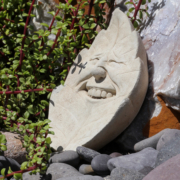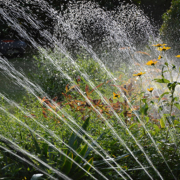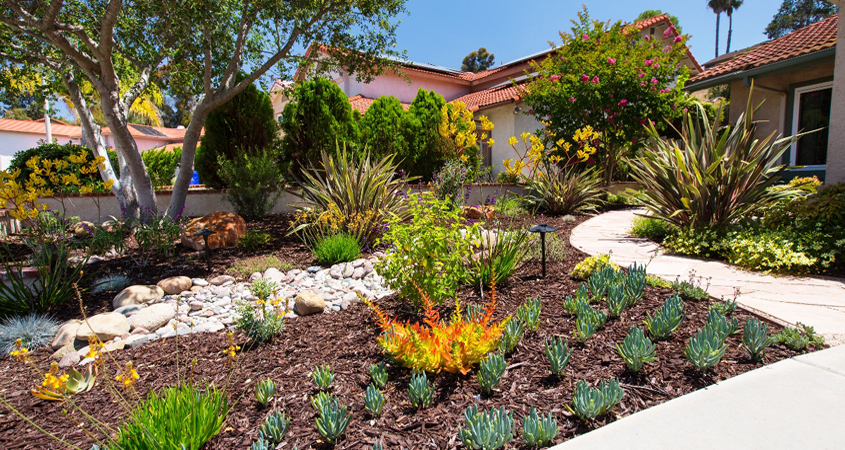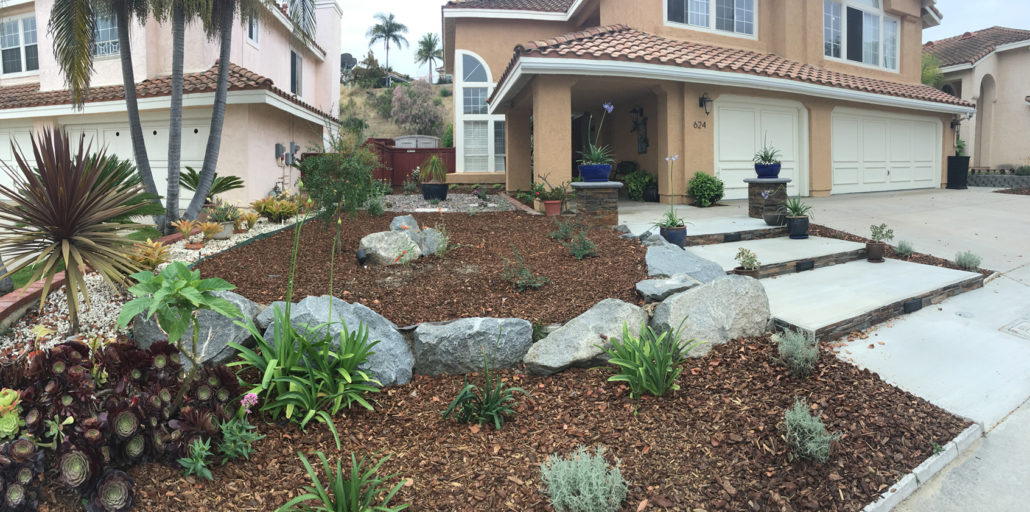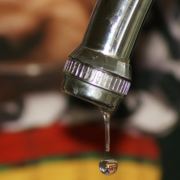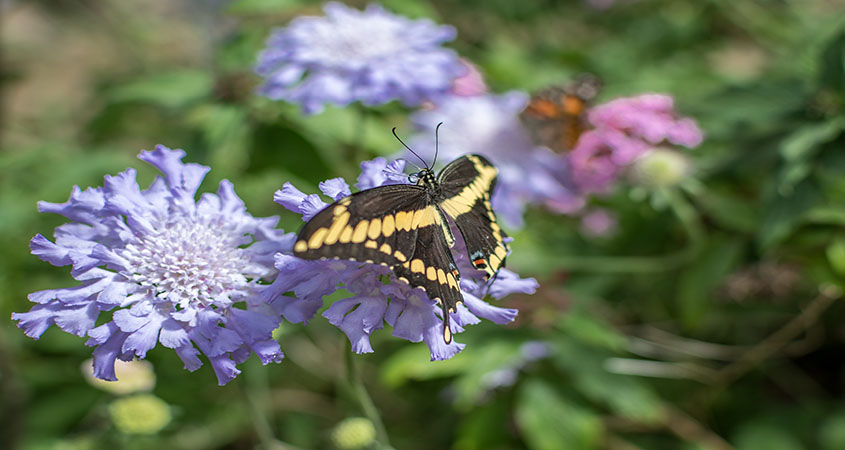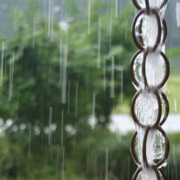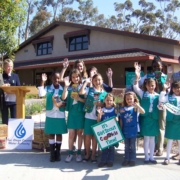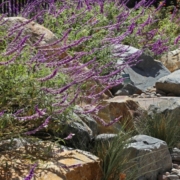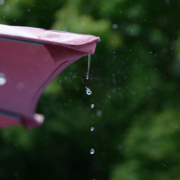WaterSmart Landscape Contest Seeks Inspiring Entries
The 2019 WaterSmart Landscape Contest invites homeowners across San Diego County to share their landscaping makeovers to inspire and encourage more people to consider their own makeovers by showcasing the beauty and variety of water-efficient landscapes.
The winning landscape from each of the participating water agencies will receive a prize valued at $250 and be recognized in print and online publications. The deadline to apply is April 26. Enter the contest here: www.landscapecontest.com
Customers of these local water agencies are eligible: the City of Escondido, Helix Water District, the City of Oceanside, Olivenhain Water District, Otay Water District, Padre Dam Municipal Water District, Rincon del Diablo Water District, City of San Diego, San Dieguito Water District, Sweetwater Authority, Vallecitos Water District, Vista Irrigation District and California American Water.
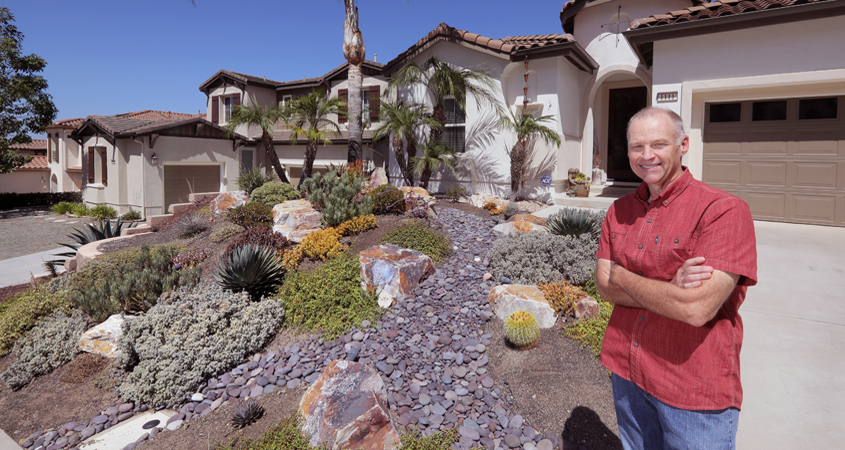
Jeff Moore stands in his San Marcos front yard featuring his award-winning waterwise landscaping work. Photo: Water Authority
Contest rules vary with each agency, but all entries will be judged on the same criteria. Judges are looking for overall attractiveness of the landscaping including its curb appeal and whether the plants are well maintained; a design with adequate plant coverage and permeable soil able to thrive with less water; efficient methods of irrigation; and climate-appropriate plant selection with minimal turf.
Water-efficient landscaping is beautiful
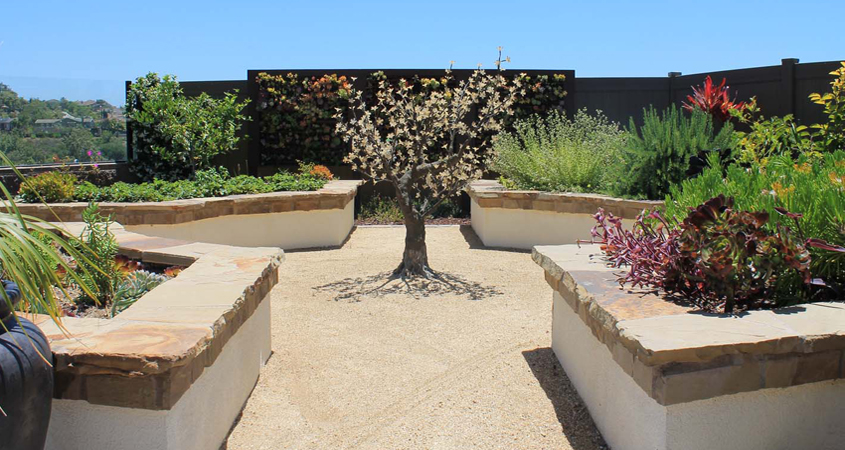
Raised planter beds and a living wall are features in this award-winning Olivenhain area landscaping project. Photo: Courtesy OMWD
San Diego County residents have embraced the new WaterSmart approach to their landscaping, installing water-efficient gardens and removing thirsty turf in increasing numbers.
One of those swapping turf for sustainable landscaping is San Marcos homeowner Rhonda Holmes. She won the 2018 Vallecitos Water District Landscape District contest. Holmes transformed the landscape at her home shortly after buying it. Her outdoor remodel included replacing the front and backyard turf areas with water-efficient plants.
She designed a garden that was smart on water while being beautiful at the same time.
“It’s really easy to do,” Holmes said. “I’d love to see more people try to do their part.”
The contest aims to inspire residents to consider a landscape makeover by showcasing the beauty and variety of water-efficient landscapes.
Video of 2018 Vallecitos Water District winners
Many previous winners have taken advantage of the San Diego County Water Authority’s free WaterSmart landscape makeover classes to help them successfully create and complete their projects. More than one million square feet of turf has been targeted for removal by course participants, generating a water savings potential of 36 million gallons annually.
Interested residents can learn about the next series of Landscaping Makeover classes and register on the WaterSmartSD website.
In addition to the benefits of reducing water consumption, water-efficient landscaping can improve a home’s curb-appeal and value, and reduce the need for costly, time-consuming maintenance. Many native plant selections also have fire-resistant qualities and provide habitat for local wildlife.
Outdoor watering accounts for roughly half of statewide urban use, and more in inland areas, according to a Public Policy Institute of California report. Savings can come from installing more efficient irrigation systems and replacing thirsty lawns with less thirsty plants.

